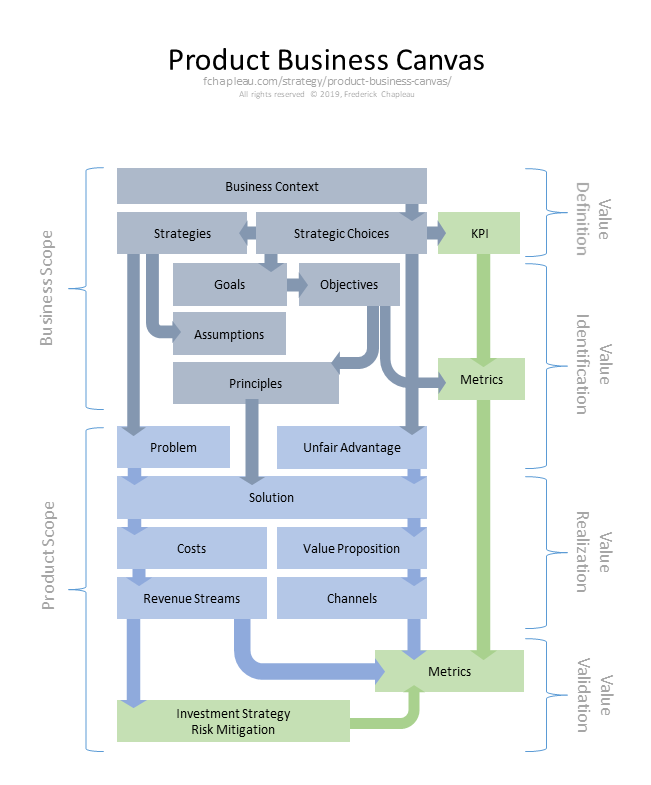Product Business Canvas
When it comes to business strategy, there is a lot to talk about. Many experienced people come with their own way of doing things, bringing many tools and principles along with it. Sometimes it’s complex, sometimes it is simplistic.
I’ve started a while a go to look into a simple way of modelling a new product, or a new initiative always taking into consideration the purpose of the product and the alignment with the business strategy. Also, it’s hard to identify the real value and the path to revenue of a product that is not yet produced.
The result of these long hours is a simple yet efficient one pager that can summarize both the product vision and its alignment with the business strategy. Obviously, I didn’t reinvent the wheel, but maybe invent a way putting into perspective a couple of tools, such as some of the Gartner’s One-Page Business Strategy and the Lean Canvas – and added my 2 cent (maybe a few dollars) on top of it.
Value Definition
Many “Gartner One-Page business strategy” has many standard components such as Business Context and Objectives, Goals and Strategies. Also these models add interesting “new” concepts that force organizations to choose a direction that includes where to go —Strategic Choices — and how to go there — Principles.
Value Identification
I have added a new item within these standard components, assumption. Many times, the business context and the strategic choices are based on assumptions, sometimes very risky assumptions. They should be put front and centre to ensure a proper risk management.
Value Realization
The Lean Canvas on the other side offers a structured way of articulating business value within the scope of a product. It was built for Lean Startups by Ash Maurya is based on the Business Model Canvas from Alex Osterwalder. This model represents core elements that should be taken into consideration when starting a new business, which can be reused when starting a new product. In general, we see in business plans problems and solutions, plus some costs and value proposition. But there are some other important ones such as unfair advantages, revenue streams and customer segments that provide some substance underneath the solution.
Value Validation
Finally, I have added an “Investment Strategy Risk Mitigation”. Usually, I use a 3 faces ROI: the return on investment should be 1 time using this product, and 2 times elsewhere. Some of these 2 other times can be marketing and branding reinforcement, HR retention, technology road map proactive alignment, operations continuous improvement, etc. This is to be sure that there is an alignment with other department/aspect of the organization. If 3 faces can’t be defined, it is usually because the product is not aligned well, or because there is a misalignment within many other aspect of the organization.
Here is an illustration of the Product Business Canvas.


